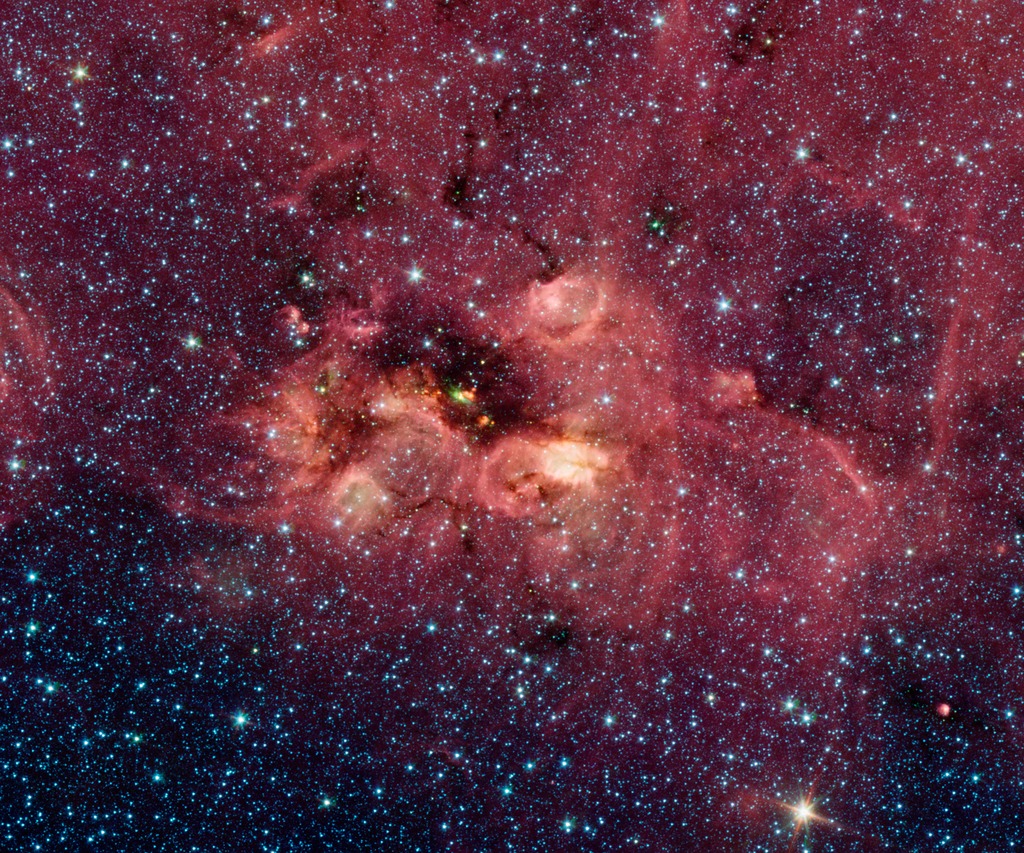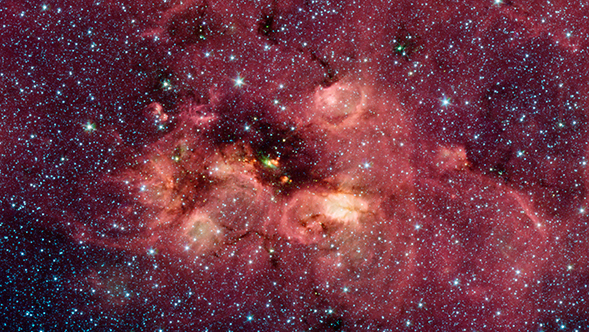
Credit: NASA/JPL-Caltech
Observation • May 15th, 2014 • sig14-009
sig14-009
When searching for the nicest nebulas in the sky it's nice when your friends help you out. This striking star formation region, mapped in infrared light by NASA's Spitzer Space Telescope, was recently spotted by one of Spitzer's Twitter followers searching through the GLIMPSE360 panorama of our Milky Way galaxy.
One of multitudes of star-forming nebulas scattered across the sky, this area had been a bit of a "dirty" secret, tucked away behind a veil of dust that blocks our view in visible light. That obscuring veil fades away under Spitzer's infrared gaze revealing a collection of young stars bursting out of the dusty gas clouds in which they formed. Astronomers identify this area only by a collection of catalog numbers like IRAS 15541-5349.
This image is a tiny snippet of the vast 20 gigapixel GLIMPSE360 panorama released in March 2014. Visitors were encouraged to use the web viewers on the Spitzer site to search through the data and then share and name their findings on Twitter. This region was tweeted by @kevinmgill, who tagged it "Nebula Does Not Approve."
Nebula images are a bit like a Rorschach inkblot test and the Spitzer team, on seeing the image, found plenty of other hidden parallels, including a fish, a raccoon, a Minecraft Creeper and a "cute coyote's head." This last idea lent an informal name for this hidden region: the "Coyote Head Nebula."
This picture was taken with Spitzer's InfraRed Array Camera, as part of the Galactic Legacy Infrared Mid-Plane Survey Extraordinaire (GLIMPSE) project. It is a four-color composite, in which light with a wavelength of 3.6 microns is blue; 4.5-micron light is green; 5.8-micron light is orange; and 8-micron light is red. Dust is red, hot gas is green, and white is where gas and dust intermingle. Foreground and background stars appear scattered through the image.
About the Object
- Name
- Coyote Head Nebula • IRAS 15541-5349
- Type
- Nebula > Type > Star Formation
Color Mapping
| Band | Wavelength | Telescope |
| Infrared | 3.6 µm | Spitzer IRAC |
| Infrared | 4.5 µm | Spitzer IRAC |
| Infrared | 5.8 µm | Spitzer IRAC |
| Infrared | 8.0 µm | Spitzer IRAC |
Astrometrics
- Position (J2000)
- RA =15h 57m 54.9s
- Dec = -53° 59' 56.7"
- Field of View
- 36.0 x 30.0 arcminutes
- Orientation
- North is 40.3° left of vertical





